Introduction by Mick Ryan
If you are an old git like me, 1984 doesn't seem that long ago. What were you doing the day that sport climbing began in the UK? Some reading this weren't even born. It was an easy birth, relatively, if you compare it to the bolt wars of the US that happened around the same time, where car tyres were slashed and noses broken in the dust of Yosemite's Camp 4. In the UK the loudest voice was undoubtedly Ken Wilson who predicted that the "thin end of wedge" would be driven through the heart of British climbing. Of course that never happened, Ken underestimated the natural checks and balances that curbed the excesses of the "clip and go" brigade, or as he put it, the souless "crag excercisors" who bolt at the first sign of danger.
Or perhaps he didn't underestimate them? Perhaps he really did know that if he ranted loud enough he could at least lessen the effects of inevitable tsunami that changed British climbing forever. This was no bouldering renaissance that most had been practicing anyway, this was something fresh and new.
Where can we lay the blame though for the great modern sport climbing areas in the UK: Portland, Pen Trwyn, Raven Tor, Malham, Kilnsey and a host of smaller areas all over the UK (yes, even in Scotland).
We had Pete Livesey and Ron Fawcett climbing bolted routes in the Verdon in the late 70s and early 80s. Big Ron returned to the Pestered Isle and in the early 80s did stuff like Raven Tor's Sardine and Indecent Exposure, and the Cave Routes in Gordale. These were old aid routes free climbed using the old existing fixed gear. The climbing community let out a collective "wow!" But still, if climbing was to move on, the convential wisdom was that it would stagnate without decent fixed gear.
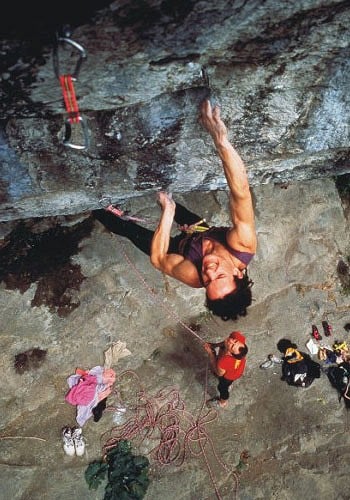
Routes like the fully and freshly-bolted Obsession at Malham, by Steve Lewis; Revelations, by Jerry Moffat; Zoolook, by Ron Fawcett; and, importantly, Statement of Youth, by Ben Moon, heralded in the start of the sport climbing revolution in the UK. This new way of climbing and new way of looking hit the headlines of the British climbing media.
There's no doubt that sport climbing gripped the collective imaginations of many UK climbers. People like Pete Oxley and Gary Gibson created whole new sport climbing areas, the Marine Drive and Malham's Catwalk ledge were awash in harlequin lycra tights, to quote the executive editor of Climb magazine, Gill Kent, we were like "peacock's in a concrete zoo." Climbers got inspiration from the French Vertical magazine, posed for photographs, became professionals and stopped dossing in the dirt – climbing became sexy. Later with the introduction of the power drill, the bolt-on-hold and panel system, and climbing competitions there was no turning back.
From Alan Watt's rap' bolting at Smith Rock in the US, to the Le Menestrel's laboratoire of Buoux in France, climbers across the world were clipping bolts (and sometimes chipping holds). Standards rocketed, Ben Moon went from climbing 8a with his brilliant Statement of Youth in 1984 at the tender age of 18, to 8c in 1989 with Agincourt and Maginot Line to a World first with Hubble, 8c+, at Raven Tor in 1990.
Now sport climbing is enjoyed by thousands across the globe (at whatever grade you climb) and no-one really complains anymore, even Ken is quiet. In the UK during the long winter months, when the chalk storms and the rain dribbles, we head to Spain, France or Greece. Sport climbing has become an international pastime, part of our diverse rock climbing culture that includes bouldering, trad climbing, deep water soloing and headpointing. If you truly love moving over stone you don't decline any opportunity to get outside and climb whatever label you care to attach to what is essentially the same thing.
Part of the sport climbing influence is overt competition exemplified by websites like 8a.nu, who rank climbers on their performance. Who is the best? Who climbs the hardest? These are common questions from the mouths and keystrokes of climbers these days. If there was one, which country would win the Sport Climbing World Cup? Portugal wouldn't stand a chance? Brazil wouldn't even qualify. Surely the French and the Germans must stand a chance as they invented the beautiful sport climbing game? England has a strong team from the enigmatic John Gaskins to the vast experience of the team captain, Steve McClure. We must have a fighting chance with these climbing crusaders, all three have climbed the magic 9a and maybe harder. Time to unfurl the St.George cross, crack the Bud open, read the pre-match analysis in the Daily Mail and switch channels from Big Brother to the big game. (Sorry, there'll be no celebrity WAG gossip here.)
Last October (2005) the editors of Canada's Gripped magazine featured an article entitled Sport Climbing World Powers, they basically published the results of the Sport Climbing World Cup. Trust the Canadians, eh? We've published it as is although since then there have been several notable hard first ascents. Significantly perhaps Dave Grahams Coup de Grace in Ticino, Switzerland. He proposed a grade of 9a+/5.15a which would put Switzerland in joint bronze medal position.
So hold on tight, this isn't going to be pretty!
Sport Climbing World Powers
Hard sport climbing has spread from France to the rest of the world in less than two decades. But where are the hardest routes, and therefore the hardest climbers? Which countries are advancing sport climbing the fastest?
Gripped surveyed the scene and put together this report, based purely on how many 9a and 9a+ climbs have been completed in a given country. For interest, we have noted the population of each country, as this reflects the number of potential climbers.
Any survey has weaknesses and this one has a few. A country could have a massive base of 8c+ routes and not rate in our survey. Also, a country's climbers might do most of their hardest sends elsewhere, so a climb in one country might even be something first climbed by a foreigner. Yet most strong climbers come from countries with enough rock to gain mastery on their home turf and that is where they tend to do their hardest sends.
Only routes of 9a (5.14d) and 9a+ (5.15a) were considered.
Spain
Population: 40.3 million
17 Points
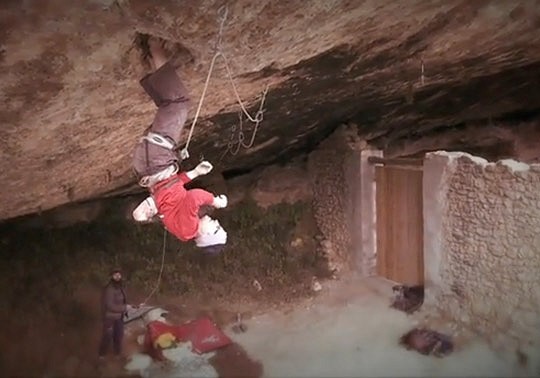
In the 80s, Spain became well known as a winter climbing spot. Since then, there has been an explosion of routes on Spanish limestone, mainly done by Spanish climbers. Now Spain's list of routes includes some of the hardest in the world. Cliffs like Siurana and Baltzola are spoken of in the hushed tones once reserved for Ceuse and other French crags. Basque and Spanish climbers consistently set new standards in all disciplines of climbing, and their home-turf abounds with sport climbs that redefine the possible.
France
Population: 60.6 million
12 Points
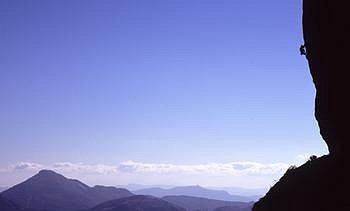
France is the cradle of modern sport climbing, competition climbing and bouldering. French rock climbing rocketed from being a sideshow to the scenes in Yosemite and Britain in the early 80s to leading the world in the early 90s. Their supply of limestone that is climbable for most of the year is almost unlimited. French climbers also benefit from a state-supported training system. At present, French route climbing lags slightly behind Spain in terms of absolute hardest routes, but this doesn't reflect the fact that 8b+ and harder is well established in dozens of crags throughout the country.
United Kingdom
Population: 60.4 million
8 Points
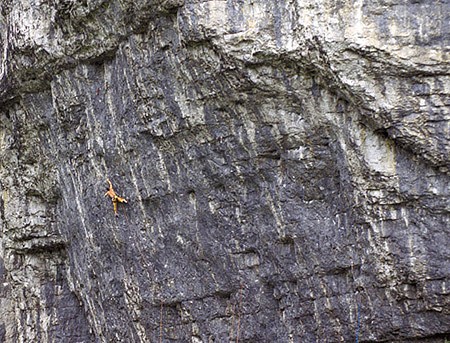
There was a time when the sun never set on climbing countries that clung to England's clean, traditional climbing ethos. Yet the imperial progress of traditional climbing, which was worked out on its small green cliffs and spread to Yosemite and beyond, was finally halted at Buoux, Verdon and Smith Rocks. Traditional ethics still flourish on mountain crags in Wales and Scotland, and gritstone is home to some of the boldest leads on the planet. British limestone is copious, with cliffs scattered from Wales to Northern England, and cliffs such as Raven's Tor and Kilnsey have an important and developing place in the history of hard sport climbing. Yet, the UK, despite its population size, lags significantly behind France and Spain in sport climbing. Perhaps this is because standards in other aspects of climbing remain so high, and sport climbing is still reserved as a special approach limited to the very hardest limestone routes.
United States
Population: 295.7 million
7 Points
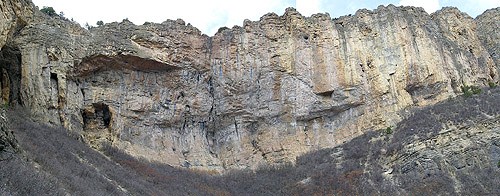
The United States became the world power of climbing in the seventies when English trad ethics soared to unimagined heights on western granite. Smith Rocks was the base for initial American forays into sport climbing, but it was soon infiltrated by French climbers who blew up the standards and showed that they were the masters now. The United States has more than three times the population of France, the next biggest country in this article, and, arguably, the largest supply of rock in the world. If France was the size of the US, based on the ratio, of hard climbs to population, it would have 25 routes over 9a, (but it would still have far fewer McDonald's restaurants).
Switzerland
Population: 7.5 million
6 Points
Switzerland, the second smallest country in this article, is known for chocolate, cuckoo clocks, watches and alpine giants like the Eiger and the Matterhorn. In recent years the bouldering in the Magic Woods and numerous other locations have come to light as Swiss boulderer Fred Nicole has set new standards around the world. Switzerland is also a major player in the multi-pitch sport scene with long adventurous bolted routes up to 8b+ on big walls like the Gastlosen and the Eiger. Now, tiny Switzerland is also a major sport climbing world power with a handful of 9a routes and a confirmed 9a+. (We haven't included Dave Graham's recent Coup de Grace 9a+...UKClimbing editor).
Austria
Population: 8.2 million
5 Points
Austria's mountains sport numerous routes on big limestone walls up to 8b and traveling Austrian rock climbers and mountaineers have left their mark on peaks all over the world. Sport climbing in Austria is obviously in great shape as well. It is fun to speculate that if Austria were the size of France, (which is more than six times the size of Austria), and the proportion of hard routes to population stayed the same, it would easily have the largest number of hard climbs in the world.
Japan
Population: 124.4 million
4 Points
Japan has the second largest population of any country in this article. Japan has limited unexplored terrain of any kind, so top Japanese climbers traditionally focus almost all of their efforts abroad. The homeland of Yuji Hirayama, Dai Koyamada and others cannot therefore be judged purely in terms of the number of hard routes they have done on home turf. Climbing is still an evolving sport in Japan and the county's status is sure to rise over time.
Germany
Population: 82.4 million
2 Points
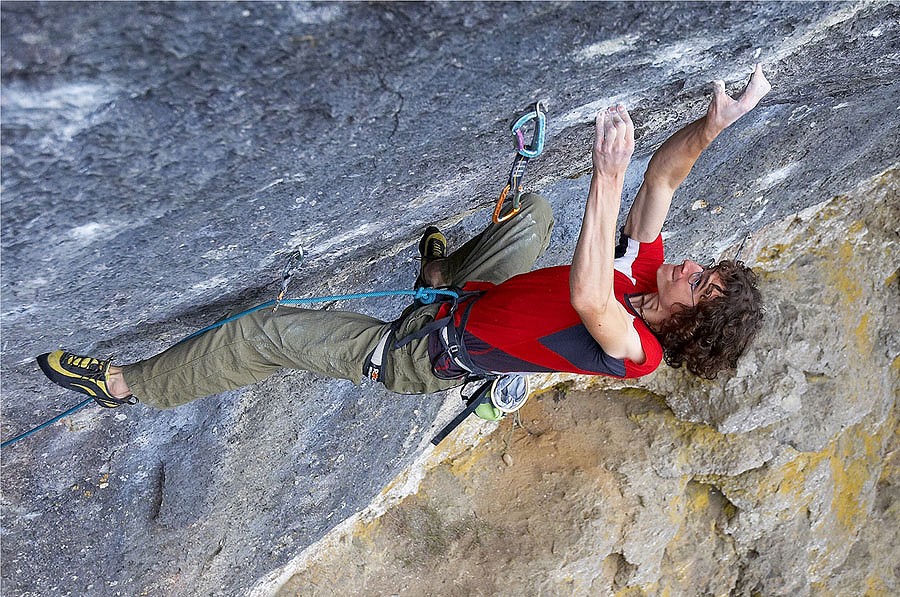
Germany was perhaps the second country after France to embrace sport climbing. The small limestone outcrops of Frankenjura were a playground for a whole generation of extreme German climbers, the greatest of whom was Wolfgang Gullich, who set many standards around the world, invented modern training and sent the world's first 9a, Aktion Direkt. At present, however, Germany lacks routes of the 9a+, although German boulderers and climbers have set very high standards at home and abroad.
Italy
Population: 58.1 million
2 Points
Italy conjures images of the vertiginous north faces of the Dolomites, sketchy old gear and questionable rock. In the 80s there was an onslaught of long granite routes in the Arco area, followed by the free ascents of many big walls. Sport climbing and bouldering at the highest levels are beginning to catch up. There is a plethora of routes around 8c/8C+, but so far, only two 9a climbs, but this is sure to change soon.
Poland
Population: 38.6 million
2 Points
Polish alpinists took the Himalayas by storm in the 70s and still make some of the hardest alpine climbs in the world. Polish sport climbing is not so well known, but with extensive crags throughout the country, a strong climbing tradition and a huge climbing community, it isn't surprising that standards are on the rise.
Slovenia
Population: 2.0 million
2 Points
Slovenia is the smallest country in this article, yet it has a strong contingency of climbers, and numerous 8b+'s and harder. To date, however, there is only one 9a.
Czech Republic
Population: 10.2 million
1 point
The tiny Czech Republic boasts one of the proudest traditional climbing legacies in the world, with the sandstone of the Elbe River region of Bohemia. There, 7b was first climbed decades before it was known in any other rock climbing area in the world and traditional ethics still rule. But there is more to Czech climbing than bare feet and rusted ring bolts. Climbers like Rosta Stefanek have been busy pushing standards and with a wealth of limestone and sandstone crags and more hard routes are certain in the future.
Further reading
Adrian Berry's Sport Climbing Records at the PlanetFear website .
Udo Neumann's list of hardest climbs.
Below is the G-spot at Giggleswick, North Yorkshire, home to John Gaskin's Violent New Breed 9a+, short but probably home to the hardest physical move in the world.
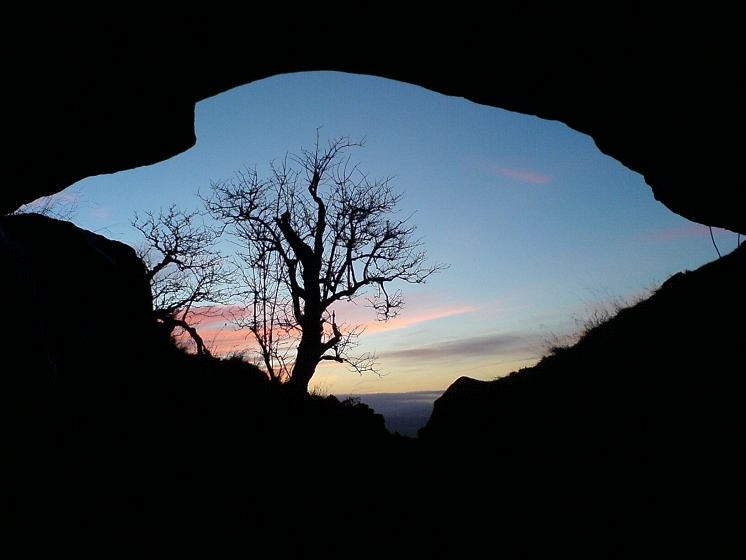
Thank you to David Chaundy-Smart and Sam Cohen of Gripped magazine for letting us run their article. Check out the Gripped magazine website.
 .
.
Thank you to Alex Messenger (website, Snowfire), Pete O'Donovan(gallery), Mark Glaister, Kevin Stephens, Dave Pegg (Wolverine publishing), Ben Moon (Moon Climbing) and John Bennetts for their excellent photographs.

Comments